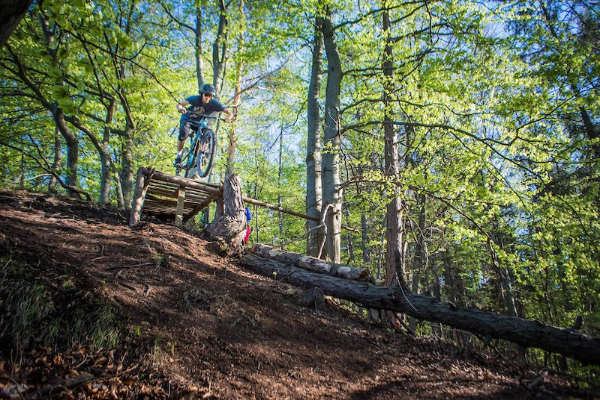Mountain biking is a thrilling and adventurous sport that tests your endurance, skill, and courage. Riding through rugged terrains and challenging trails offers a unique sense of freedom and exhilaration. However, one common issue that can detract from this experience is keeping your feet warm, especially in colder climates or during winter rides. Cold feet can lead to discomfort, decreased performance, and even health risks such as frostbite. This comprehensive guide will provide you with effective strategies and tips to keep your feet warm while mountain biking, ensuring a more enjoyable and safe ride.
Understanding the Importance of Warm Feet
Keeping your feet warm is crucial for several reasons:
- Comfort: Warm feet prevent discomfort and pain, allowing you to focus on the trail and enjoy your ride.
- Performance: Cold feet can reduce your pedaling efficiency and overall performance.
- Health: Prolonged exposure to cold can lead to frostbite or other cold-related injuries.
Choosing the Right Footwear
Selecting the appropriate footwear is the first step in ensuring warm feet. Here are some key considerations:
Mountain Biking Shoes
Invest in high-quality mountain biking shoes designed for cold weather. Look for features such as:
- Insulation: Shoes with thermal insulation materials will help retain heat.
- Waterproofing: Waterproof shoes will keep your feet dry in wet conditions.
- Breathability: Ensure the shoes are breathable to prevent moisture buildup from sweat.
Overshoes and Toe Covers
Overshoes and toe covers are additional layers that can be worn over your mountain biking shoes to provide extra insulation and protection from the elements.
- Overshoes: Made from neoprene or other insulating materials, overshoes cover the entire shoe, providing an extra layer of warmth and waterproofing.
- Toe Covers: Toe covers are smaller and cover only the front part of the shoe, protecting your toes from wind and cold.
Choosing the Right Socks
Socks play a vital role in keeping your feet warm. Here are some tips for choosing the right socks:
Material
Select socks made from moisture-wicking and insulating materials such as:
- Merino Wool: Known for its excellent insulation and moisture-wicking properties.
- Synthetic Blends: Materials like polyester and nylon can also provide good insulation and moisture management.
Thickness
Choose socks of appropriate thickness based on the temperature and your shoe size:
- Thick Socks: Provide more insulation but ensure they do not make your shoes too tight.
- Thin Socks: Suitable for milder conditions or for layering with thicker socks.
Layering for Warmth
Layering is an effective strategy for maintaining warmth. Consider these layering techniques:
Double Socks
Wearing two pairs of socks can provide extra insulation. Use a thin moisture-wicking layer next to your skin and a thicker insulating layer on top.
Sock Liners
Sock liners are thin, lightweight socks worn under your regular socks. They help wick moisture away from your feet, keeping them dry and warm.
Managing Moisture
Keeping your feet dry is essential for warmth. Here are some tips for managing moisture:
Waterproof Shoes and Socks
Invest in waterproof shoes and socks to prevent external moisture from reaching your feet.
Antiperspirant
Apply antiperspirant to your feet before your ride. This can help reduce sweating and keep your feet dry.
Using Heat Sources
Heat sources can provide additional warmth. Here are some options:
Chemical Warmers
Chemical warmers are small, disposable packs that generate heat when activated. Place them in your shoes or socks for extra warmth.
Electric Heated Insoles
Electric heated insoles are battery-operated insoles that provide consistent warmth. They can be adjusted to different heat levels based on your preference.
Pre-Ride Preparation
Preparing your feet before your ride can help maintain warmth. Consider these pre-ride tips:
Warm-Up
Warm up your feet before heading out. Take a short walk or jog to increase blood flow and generate heat.
Warm Footwear
Preheat your shoes and socks by placing them near a heat source before putting them on.
On-Ride Strategies
During your ride, use these strategies to keep your feet warm:
Keep Moving
Continuous movement generates heat. Avoid long stops or breaks that allow your feet to cool down.
Adjust Your Gear
Adjust your clothing and gear to maintain a comfortable body temperature. Avoid overheating, as sweating can lead to cold feet.
Post-Ride Care
After your ride, take care of your feet to prevent cold-related issues:
Dry Your Feet
Remove wet socks and shoes immediately and dry your feet thoroughly.
Warm Up
Warm up your feet gradually using warm water or a heat source. Avoid using hot water, as it can cause burns or further damage.
See Also: Is Mountaineering a Sport
Additional Tips
Here are some additional tips to keep your feet warm:
- Hydration: Stay hydrated to maintain proper blood flow and circulation.
- Nutrition: Eat a balanced diet to fuel your body and maintain energy levels.
- Avoid Alcohol and Caffeine: These substances can constrict blood vessels and reduce circulation to your extremities.
Conclusion
Keeping your feet warm while mountain biking is essential for a comfortable and enjoyable ride. By choosing the right footwear and socks, layering effectively, managing moisture, and using heat sources, you can ensure your feet stay warm even in the coldest conditions. Remember to prepare before your ride, use on-ride strategies, and take care of your feet post-ride to prevent cold-related issues. With these tips, you can focus on the trail and enjoy the thrill of mountain biking without worrying about cold feet.

